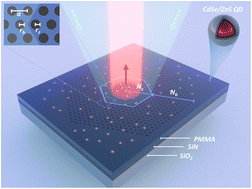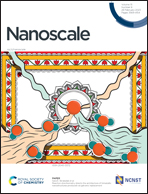Enhancement of spontaneous emission from CdSe/ZnS quantum dots through silicon nitride photonic crystal cavity based on miniaturized bound states in the continuum
Abstract
Colloidal CdSe/ZnS quantum dots (QDs) exhibit excellent optical properties for wide potential applications in light-emitting diodes, solar concentrators, and single-photon sources. However, the ultra-thin films with low concentration of QDs still encounter inefficient photoluminescence (PL) and poor directionality of radiation, which need to be enhanced using nanophotonics device designs. Here we design and experimentally demonstrate an on-substrate silicon nitride (SiN) photonic crystal (PhC) microcavity encapsulated by a layer of PMMA hosting CdSe/ZnS QDs. The miniaturized bound states in the continuum (BIC) supported by our structures, provide high-Q resonant modes with highly-directional emission patterns. Experimental results show that the BIC mode in the microcavity has a Q-factor up to 7000 owing to the symmetric refractive index distribution along the Z-direction, rendering 8.5-fold enhancement of PL intensity and 8.4-fold acceleration of radiative emission rate. Our work provides a practical way for constructing efficient on-chip surface-emitting light sources on silicon-based integrated photonic devices.

- This article is part of the themed collection: Nanoscale quantum technologies


 Please wait while we load your content...
Please wait while we load your content...